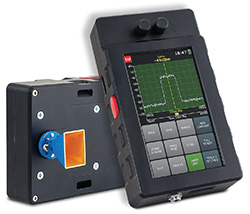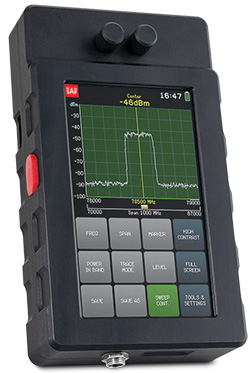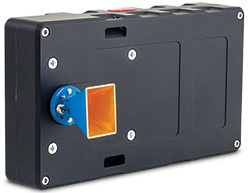
In the last few years, the deployment of 71 to 76 GHz and 81 to 86 GHz bands (E-Band) has increased significantly fueled, in part, by the growing demand for high capacity point-to-point radio links. With the increased requirement for high capacity networks and implementation of 4G or even 5G in the near future, mobile operators are moving towards small cell or picocell technology. One approach is to use E-Band radios for last mile backbone connection from telecommunication infrastructure to the mobile base station, thus reaching places that fiber optics cannot reach and satisfying network capacity demands.
Indications are that the E-Band spectrum will evolve similarly to the unlicensed 5.8 GHz band if there are no dramatic changes in the market. That means users will require in-depth link planning to avoid interference and to identify free channels before the installation. Also, it is likely that frequency regulatory authorities will begin to regulate this market. This is not happening at present because there are no convenient tools, such as portable spectrum analyzers, operating in the E-Band frequency range or the equipment available on the market is expensive.
SAF Tehnika has addressed this issue with their Spectrum Compact J0SSAP80 spectrum analyzer, made specifically for the E-Band frequency bands ranging from 70 to 87 GHz. It is an addition to the existing Spectrum Compact product line that covers the 2 to 40 GHz range.
CHARACTERISTICS

Figure 1 E-Band spectrum analyzer.
The company claims this is the first handheld spectrum analyzer on the market covering the 70 to 87 GHz frequency bands. It does not use any external down-converter, working directly with E-Band frequencies. The J0SSAP80 has a fixed 10 MHz resolution bandwidth (RBW) and a noise floor of at least -90 dBm. It comes with a wide beam sniffer antenna attached to the waveguide flange (WR 12), which is located on the back panel of the analyzer. The scan speed of 0.5 s at 1 GHz span and the level of system gain make this spectrum analyzer suitable for interference detection, free channel investigation and tower inspections from ground level.
Spectrum Compact J0SSAP80 can be used by mobile operators and private network owners in the radio network planning stage to avoid expenses caused by installing a non-operational link because of interference. For frequency regulatory authorities, it can be a great asset and help to start real life monitoring in E-Band, with the option to perform tower inspections from the ground level and to control the licensing and deployment.
Like the entire Spectrum Compact range, the J0SSAP80 is designed specifically for comfortable outdoor use in a variety of challenging environments. This battery powered instrument is suitable for microwave radio engineers performing equipment installation, link troubleshooting or gathering data for site planning purposes. One of its most prominent features is the form factor — dimensions of this device are similar to those of a cell phone.
FIELD OPERATION
Instead of focusing on features that would only be useful in a laboratory environment, the spectrum analyzer has the qualities and functionality needed by microwave field engineers to efficiently perform their daily tasks: radio parameter verification, antenna alignment, interference and multipath detection, power in-band measurements, link troubleshooting and saving the spectrum curves for reports and later analysis. The device is shown in Figure 1.
The instrument utilizes a resistive touch screen for ease of use in the field, allowing the engineer to wear gloves when using the device. Furthermore, its high sensitivity and low noise floor enable field engineers to detect even exceptionally weak signals. This makes it possible to do multiple measurements from the ground level and do link troubleshooting without site traffic interruptions.
A standard kit includes the spectrum analyzer and a small wide angle horn antenna, as shown in Figure 2. The E-Band antenna is attached to a WR 12 waveguide flange at the back of the spectrum analyzer, making it possible to detect and visualize the incoming signal just by pointing it towards the transmitting radio.

Figure 2 Rear view of the E-Band spectrum analyzer.
The J0SSAP80 has a 54 International Protection Marking (IP code) meaning that the analyzer is dust protected and can be used in rainy conditions. A weatherproof DC socket decreases the required charging time and a fully charged unit has up to 3 hours of battery life.
SAF Tehnika
Riga, Latvia
www.saftehnika.com
